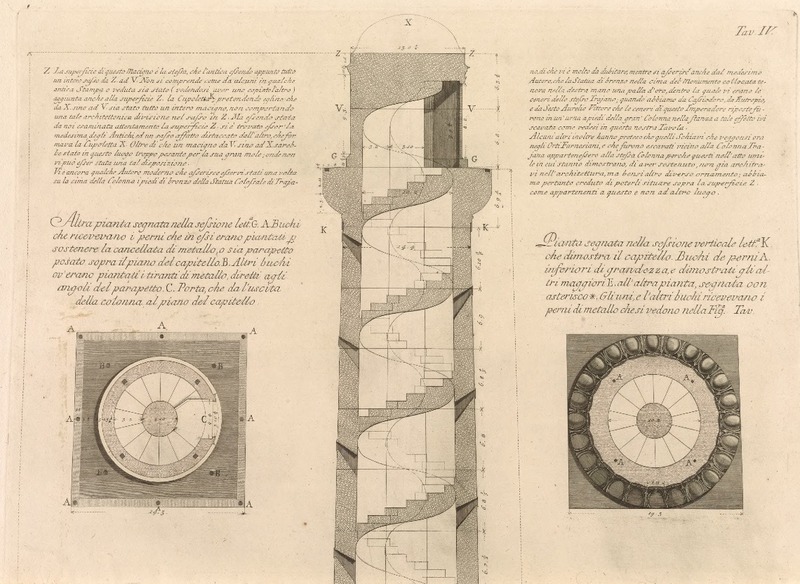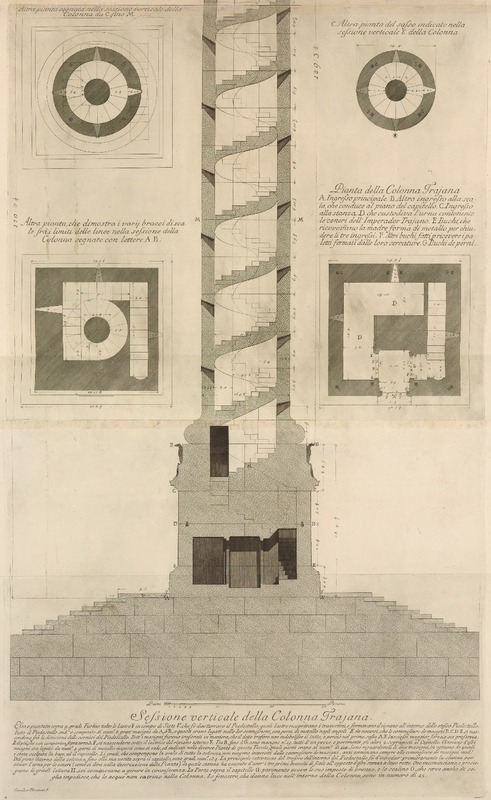Construction
The upper part of Trajan's Column, with the famous frieze wrapping around the outside of column as it rises from the funerary base, represents the triumphal element of the monument. The column shaft makes up 98 feet of the entire monument’s massive height of 128 modern feet (equivalent to a symbolically significant 100 Roman feet, by some accounts)1. The internal spiral staircase leads to a platform with an unparalleled view of Rome, emerging just below what was in ancient times a bronze statue of Trajan. In 1588, Pope Sixtus V placed a bronze statue of Saint Peter in its stead2.
Seventeen gigantic drums of Carrara marble form the shaft of the column. Architects most likely used a system of scaffolding and pulleys to stack the drums on top of each other. Each drum contains a small window and a section of spiral staircase carved directly into what began as a solid block of marble, which architects subsequently hoisted up and attached to the drum below with internal bronze pins. Artists probably carved the frieze while standing on scaffolding after all the drums were stacked in place, perhaps using drawings on large strips of papyrus as a templates3.
For an entertaining depiction of one theory of the construction process, see National Geographic's stop-motion video.
________
1. Filippo Coarelli et al., The Column of Trajan (Rome: Colombo, 2000), 24.
2. Bruno Brizzi, "The Forum and the Column of Trajan after the Fall of the Empire," in The Column of Trajan, ed. Filippo Coarelli (Rome: Colombo, 2000), 239.
3. Coarelli, 11.

